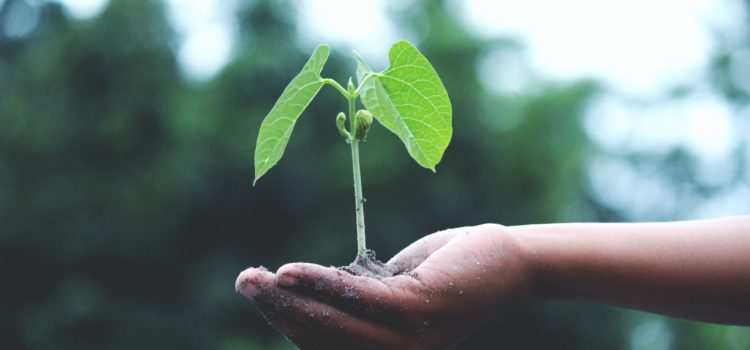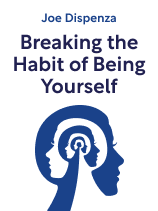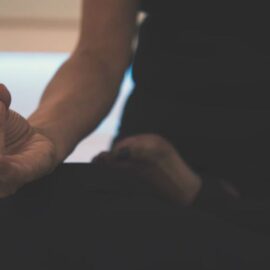

This article is an excerpt from the Shortform book guide to "Breaking the Habit of Being Yourself" by Joe Dispenza. Shortform has the world's best summaries and analyses of books you should be reading.
Like this article? Sign up for a free trial here.
What exactly are habits? What role do habits play in your life? How do habits form?
Habits are thoughts, emotions, and behaviors that you engage in regularly. Your habits are the foundation of your personality because they represent your way of being and acting in the world. Therefore, changing your life requires changing your habits.
Keep reading to learn how habits develop and how they become second nature.
Where Do Our Habits Come From?
How do habits form? According to Joe Dispenza, habits (as well as traits and skills) develop through a set of predictable steps: first, through conscious thinking—learning the information needed for that habit. Then, through doing—experiencing it, processing it, and retaining it emotionally. Finally, through being—internalizing it as an unconscious behavior or feature of your self. Once you’ve mastered a habit, skill, or trait, it becomes ingrained in you and your external environment can’t easily interfere with it.
(Shortform note: Experts estimate that over 40% of our daily activities are habitual, and that we’re able to perform them unconsciously while thinking about other things. Research also shows that people are more likely to fall into their habits—both positive and negative—if they are tired or overloaded, suggesting that it’s easier to change your habits if you’re able to get enough rest and have a positive environment.)
Sometimes, we develop bad habits. When bad habits begin to run your life, your health and well-being suffer. This is because the thoughts and emotions that make up a habit have a real and immediate impact on your body. According to Dispenza, when you remember or imagine something, your brain and body react as if it’s real.
This means we can put ourselves into a stress response state just by thinking about stressful situations. Doing so repeatedly puts us in a state of chronic stress. Stress knocks us out of balance emotionally, so chronic stress makes us unbalanced people. It keeps us focused on our external reality, which doesn’t leave enough energy for our internal functioning—our thinking and feeling—and we often end up getting sick as a result.
State of Being: A Thinking-Feeling Loop That Leads to Habits
Dispenza argues that your thoughts and feelings together create a loop that shapes your reality—what Dispenza refers to as a state of being.
Thoughts come from the mind, and feelings come from the body. However, while thoughts and feelings originate in different places, they’re constantly giving each other feedback, creating a loop: A thought will make you feel a certain way, and then when you later feel that specific way, you’ll have that same thought. Loops can be positive or negative. A bad thought is accompanied by a bad feeling, and the next time you have that feeling, the bad thought comes. Or you have a good feeling that feeds into good thoughts, and vice-versa.
These feedback loops shape your reality. If you have a negative loop, you’ll see the world negatively. If you have a positive loop, you’ll see the world positively. This reality eventually becomes a part of your identity. If your state of being is one of insecurity, for example, you’ll begin to think of yourself as an insecure person. And, the more these loops are allowed to continue, the more these habits become hardwired into you.
Neuroplasticity: Hardwiring a Reality Into the Brain to Create Habits
These thinking-feeling loops literally change your brain so they become more ingrained in you, thereby forming a habit. As Dispenza explains, recent research in neuroscience has shown that our brains have the ability to change in response to stimuli, both internal and external. This quality is referred to as neuroplasticity, and it means the way you think can literally change the structure of your brain. Let’s look at how this works.
When you have a thought or feeling, certain neurons in your brain fire electrical signals. The more often neurons fire at the same time, the more likely they are to fire at the same time in the future—in other words, neurons that fire together, wire together, a principle known as Hebb’s law.
Because of neuroplasticity and Hebb’s law, the thinking-feeling loops change the structure of your brain—frequently thinking or feeling something causes you to repeatedly use the neurons associated with those thoughts or feelings, which hardwires those thoughts or feelings into your brain, forming a habit.
For example, when you see an ad featuring a supermodel, you may feel shame when you think about your body. If you see this ad repeatedly, the neurons that fire when you feel shame and the neurons that fire when you think of your body will begin to wire together, and eventually you’ll start to think about how your body looks any time you feel shame. You’ll have hardwired this association into your brain and made it a habit.
Epigenetics: How Our Thoughts Change Our Genetic Function
According to Dispenza, our experiences can change not only our brains, but even our genes, or more precisely, how our genes are expressed. Scientists used to believe that our genes were unchangeable and responsible for most illnesses. Recently, however, the study of epigenetics has shown that the way our genes are expressed changes in response to our experiences and external environment. Dispenza says this has led us to realize that only 5% of today’s illnesses are the result of genes and that the rest are the result of our environment.
(Shortform note: Not only can our environments change our genetic function, but recent research suggests these changes can be passed directly on to our offspring. This means that if you experience chronic stress throughout your life, you may be genetically predisposing your future offspring to chronic stress as well, and that dealing with stress in a healthy way can benefit your future offspring and subsequent generations.)
Dispenza suggests that we can use our internal environment to control the effect our external environment has on our genes, and that a strong, positive internal state can help us overcome harmful environments.(Shortform note: Some genes may predispose us to being more susceptible to our environments than other people. For such individuals, a negative environment will have a stronger negative effect on them than it would the average person, and a positive environment will have a stronger positive effect. Dispenza doesn’t account for these individual differences and suggests that everyone can control their environment through their internal state).

———End of Preview———
Like what you just read? Read the rest of the world's best book summary and analysis of Joe Dispenza's "Breaking the Habit of Being Yourself" at Shortform.
Here's what you'll find in our full Breaking the Habit of Being Yourself summary:
- How your habits are keeping you from growing
- How to unlearn your harmful habits to create a new you
- A four-step meditative practice to help you learn new habits






